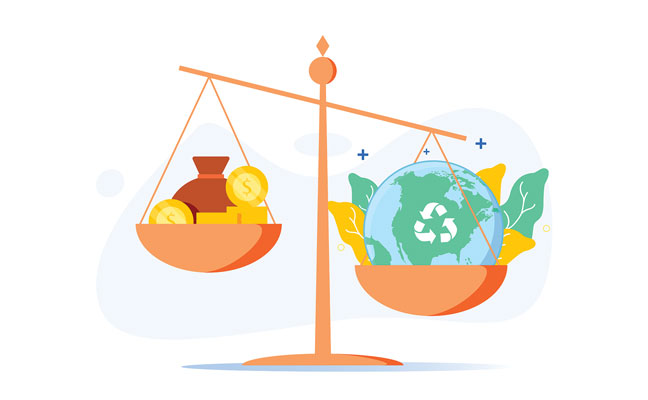
Illustration: Mykyta Dolmatov/iStock / Getty Images Plus/Getty Images
In the coming months, you will be hearing a lot about Environmental Justice, a federal program that has been in place in various forms for years.
Created in 1994 via Executive Order 12898, the program’s goal is clear: “…to address the disproportionately adverse human health and environmental impacts in overburdened communities by integrating environmental justice considerations throughout the [U.S. Environmental Protection Agency, or EPA].”
The EPA, in coordination with the White House Environmental Justice Advisory Council, has ramped up its efforts in 2022. The objective is to afford equal protection to “overburdened communities” with regards to risks due to environmental issues, whether they affect safe drinking water, air, or general exposure to hazards, including chemicals.
While it is unfair to generalize and oversimplify, the EPA points to overburdened communities particularly among minority or low-income populations. For example, the EPA will evaluate whether businesses increase risk to neighbors in these designated areas; the program might evaluate whether a business located in a disadvantaged area perhaps due to land pricing coincidentally led to an environmental hazard for neighbors. The EPA has a web page dedicated to this program at epa.gov/environmentaljustice.
SETTING THE GOAL
While this could be seen as an attempt to further regulate businesses, the goal is to make sure businesses are good neighbors. As always, though, some activists are trying to use this program to penalize businesses, which commonly provide good jobs to its neighbors. One of the key — and hopefully successful — objectives is the emphasis on communication and interaction between businesses and the surrounding community. View this as the Emergency Planning and Community Right-to-Know Act on steroids.
This is not a regulatory program. Rather, it calls attention to the economically distressed to provide funding in multiple arenas to improve the quality of life for neighbors of businesses, if done correctly.

Greg Baumann
Only time will tell whether the stated goal will bear fruit or if, as detractors might suggest, this is just another bureaucratic program that merely creates bigger government.
The White House Environmental Justice Advisory Council is an assembly of federal employees, academics, businesses, community-based organizations, non-government organizations, state and local governments, and tribal/indigenous government and organizations. It is so diverse in background, interests and goals that it will take some time to organize and speak with one voice. Regardless, Environmental Justice is here to stay. It will require industry participation in some fashion, whether it is tied to pest management supplier scrutiny or locations of pest management firms.
GOVERNMENT INITIATIVE
Boosting Environmental Justice is Justice40, the Biden administration’s priority to advance environmental justice and economic opportunities for disadvantaged communities. Unveiled last year, Justice40 is a commitment by the administration to appropriate “at least 40 percent of the overall benefits from federal investments in climate and clean energy to disadvantaged communities.”
In the spending bills this year, major funding will be included to meet the goals of Justice40. Our industry has been relatively uninvolved on this issue thus far, but I expect that as things unfold, we will hear much more from national and state groups on this issue. Now is the time to learn more about Environmental Justice and Justice40 so we have a united voice and a seat at the table when these programs are implemented.
The post EPA designates Environmental Justice a priority this year appeared first on Pest Management Professional.
from Pest Management Professional https://www.mypmp.net/2022/06/09/epa-designates-environmental-justice-a-priority-this-year/
Sacramento CA
No comments:
Post a Comment